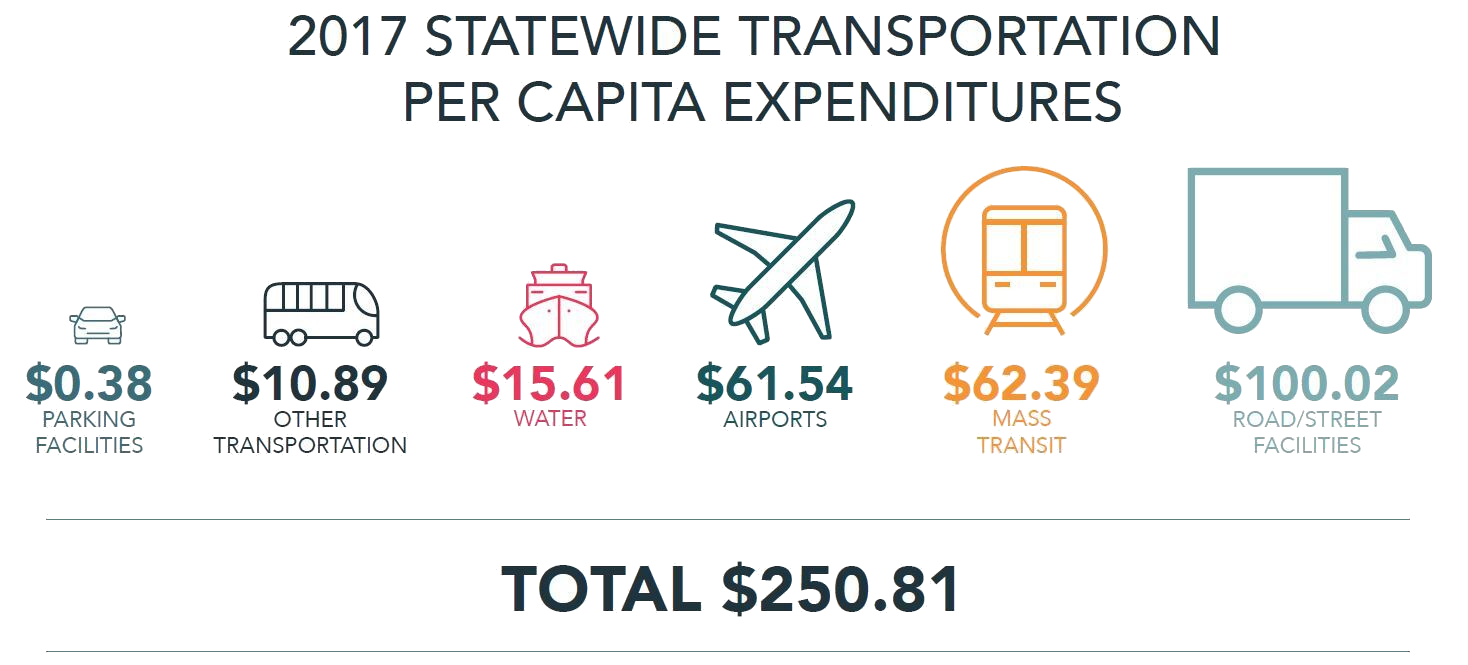

Costs and subsidies can be broken down by mode with a high degree of precision for highways and transit, and slightly less precision for airlines and Amtrak. In exchange for these costs and subsidies, Americans traveled more than 6.2 trillion passenger miles, or almost 20,000 miles per person, and shipped 5.1 trillion ton-miles of freight, or more than 15,000 ton-miles per person. On top of this, transportation received about $200 billion in subsidies from federal, state, and local governments (based on subtracting total government expenditures on transport from total government revenues from transport).
#State spending on masstransit pdf
While it’s true that most transportation is subsidized, it is worth looking at the extent of those subsidies to judge whether subsidies to some forms of transport should be increased or reduced.Ĭlick image to download a four-page PDF of this policy brief.Īmericans spent about $1.3 trillion of their personal incomes on transportation in 2017 (based on the Bureau of Economic Analysis’ National Income and Product Accounts (NIPA) table 2.5.5, lines 53 and 116). See a list of definitions for a description of each public infrastructure category.Supporters of increased subsidies to urban transit and intercity passenger trains often argue that all transportation is subsidized, so it’s only fair that transit and Amtrak should also be subsidized. Spending data shown covers the following types of construction: residential, multi-family, nonresidential, office, commercial, automotive, parking, health care, hospital, medical building, special care, educational, primary/secondary school, elementary school, middle/junior high, high school, higher education, instructional, dormitory, sports/recreation, infrastructure, other educational, library/archive, public safety, correctional, detention, police/sheriff, other public safety, fire/rescue, amusement and recreation, sports, performance/meeting center, convention center, social center, neighborhood center, park/camp, transportation, air transportation, passenger terminal, runway, land, passenger terminal, mass transit, water, dock/marina, power, highway and street, pavement, lighting, bridge, rest facility, sewage and waste disposal, sewage/dry waste, plant, line/pump station, waste water, plant, line/drain, water supply, plant, line, pump station, conservation and development, dam/levee and breakwater/jetty. Select a category from the menu below to view historical national spending data for various types of public infrastructure projects. Figures are published as annual rates and represent construction projects that are underway, regardless of when contractors actually receive payments or when a project began. Census Bureau publishes monthly estimates representing the "value of construction put in place" for new structures and improvements.


Each year, state and local governments spend more than $250 billion on construction of roads, schools and other public infrastructure.


 0 kommentar(er)
0 kommentar(er)
